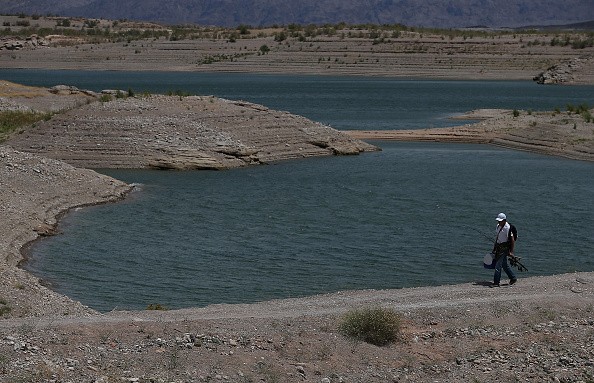Lake Mead has fallen to 36% of its capacity, supplying 25 million people in the American West. After a well cracked in early June, one rural California town has run out of water entirely.
As a result, farmers are selling their water allotments rather than planting crops, leaving fields barren and jeopardizing the nation's food supply.

Members of the US House of Representatives have filed HR 4099, a measure that would order the Secretary of the Interior to support $750 million in water recycling projects in the 17 western states through 2027. The effort is now before the House Committee on Natural Resources, presented at the end of June.
Representative Susie Lee (D-Nevada), who proposed the bill, said, "This is beginning to be our new normal-88 percent of the West is under some degree of drought." "Lake Mead has dropped to its lowest level since the Hoover Dam was built. And there has been a drought on the Colorado River for more than two decades."
Population Rise
Meanwhile, the population and economy of the western United States have been rising, placing enormous strain on an already depleted water supply.
"I suppose we have one more person. Representative Grace Napolitano (D-California), who proposed the measure, adds, "And there's an increase in the agricultural area-two." "Then there's climate change, which is worsening the issue."
Wastewater Recycling

Legislators argue that funding the building of new facilities that can recycle wastewater is part of the solution. The technology already exists, and it's been around for more than a half-century. It may be too clean for human consumption if you drink it. It may drain minerals from your body.
The recycled water can be piped underground into aquifers, pumped out as required, cleaned, and delivered to users. It might also be utilized for non-potable applications, like farming or industrial activities.
Wastewater is a crucial source of water, especially in times of drought. It provides a stable source of extra water during dry years when alternative sources would be difficult or impossible to establish. The Department of Water Resources says it has no plans to release wastewater into the ocean.
Severe Droughts
Climate change is making droughts more severe in the West. The mountain snowpack, which stores much of the West's water, is expected to drop by half by the end of the century. As a result, recycled water is injected underground to recharge aquifers.
Water Recovery

Los Angeles has been recovering water for non-potable reuse since the 1970s. However, the city's program manager says population growth could increase demand for water systems in Nevada, Arizona, and Northern California. "We have to consider how we might become more efficient with the water we do have," he says.
Currently, roughly 10% of wastewater used in municipal and industrial settings in California is recycled. The objective of Operation NEXT is to modernize the Hyperion Water Reclamation Plant so that it can recycle 100% of its wastewater by 2035, providing enough purified water to provide for almost a million people in Los Angeles.
Southern California is working on a water recycling demonstration plant with the Los Angeles County Sanitation Districts. "This isn't a moonshot," says Brad Coffey, water resource manager for the Metropolitan Water District of Southern California. Instead, it's only a matter of spreading the technology across the Western world.
Expense of Recycling Water
While water recycling is not a newfangled technology, it's not a simple or cheap process, either. It takes time to retrofit a wastewater facility for efficient recycling, and the tab for building one from scratch can run into the billions.
And once a facility is up and running, it takes a good amount of energy to push all that water through the filtering membranes and other equipment, which is also expensive.
The greater expense, according to Villegas, would be running out of time. "If we wait to act, it will be too late," Villegas warns. While the law allocates $750 million for initiatives over the next six years, such facilities' actual construction and implementation will take longer.
He says, "A program like this is likely to take many decades. So you're already behind the eight ball if you react a couple of decades later."
Improving Water Supply

Southern California's per capita water usage has decreased by 40% during the 1980s. The Los Angeles Department of Water and Power is experimenting with turning medians and roadside areas into green catchment zones that divert rainwater into underground tanks, reducing imports from Northern California and the Colorado River.
While these private and municipal efforts assist in reducing demand and improve supply, $750 million from the federal government would be a tremendous boost in expanding the recycling infrastructure that would help the West weather climate change.
"The scale of changes we're witnessing with climate change and long and severe droughts isn't about how many gallons per flush a toilet is," Coffey adds. "It's a much bigger issue that we need to address from a supply standpoint as well."
For more climate and weather updates, don't forget to follow Nature World News!
© 2026 NatureWorldNews.com All rights reserved. Do not reproduce without permission.





